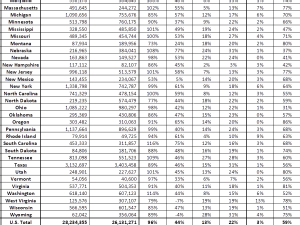India online retail hierarchy looks far from fixed
By: Reuters | May 14 2015 at 04:47 PM | Intermodal
India’s e-commerce hierarchy looks far from fixed. The exponential growth of smartphone users is rapidly changing shopping habits in the nation of 1.2 billion people. Investors have poured in hoping to pick the next Amazon or Alibaba. The opportunity is huge but low barriers to entry mean it is easy for wannabes to crash the party.
Indians are going online to buy everything from electronics to cars. Bengaluru-based Flipkart has 40 million registered users and sells between 10 and 20 percent of all Samsung, Apple and Micromax smartphones in the country through its site. Rival Snapdeal sells one saree every 12 seconds.
Over the past 13 months investors have pumped $4.5 billion into online investments in India, says Morgan Stanley. The bank reckons the country’s internet market was worth $11 billion in 2013 and could grow to $137 billion by 2020. Even then transactions will be just a third of the amount that Alibaba, China’s dominant player, processed in the year to March.
East and West
Online retailers can choose from essentially two global role models. Seattle-based Amazon mostly sells stock that it owns and keeps it in its own warehouses. By contrast, Alibaba acts as a virtual marketplace, connecting buyers to sellers of all sizes from mom-and-pop stores to international brands.
Though it is still early days, Alibaba’s model is emerging on top in India. Flipkart, which was set up by former Amazon employees Sachin Bansal and Binny Bansal in 2007, switched to a marketplace model two years ago. Others have taken a similar approach.
India’s aspiring Alibabas come with a few twists, however. They maintain centrally-located warehouses where merchants have the option to store goods. That enables faster delivery in a vast country where tax regulations and poor infrastructure create additional complexities for sellers.
This approach may be a way to sidestep India’s ban on foreign investment in online entities that sell goods directly to customers. Even Amazon operates as a marketplace in India while it lobbies for a relaxation of the law. Homegrown players have relied on foreign capital to keep up with the American giant, which is investing $2 billion in its Indian operations. Flipkart counts the Qatar Investment Authority amongst its investors. Snapdeal is backed by Japan’s SoftBank.
Another big difference is how Indian e-commerce companies generate revenue. Alibaba gets most of its income from selling advertising and information on consumer trends to merchants. By comparison, Flipkart, Snapdeal and Amazon India charge a commission on each sale.
No pain no gain
As competitors race to win market share, India’s online shoppers have been bombarded with big discounts and flash sales. Though marketplaces are legally not allowed to fix prices, they use data on customer spending habits to suggest promotional pricing to merchants. They encourage sellers to cut prices by waiving commissions, or give customers instant cash-back or credit.
That’s one of the reasons why India’s top marketplaces are in the red. Flipkart doesn’t disclose its financials but is losing 2.23 rupees for every rupee it generates in net revenue, according to Techcircle.in. UBS estimates it will take the industry until 2020 to generate an operating profit. The discounting is only likely to end when investors stop throwing money at the industry.
Meanwhile, Alibaba is shaping up to be a competitor. It is in talks to spend $1.2 billion on 20 percent of Micromax Informatics, India’s second-largest smartphone maker. Earlier this year Alibaba affiliate Ant Financial bought 25 percent of India’s One97, owner of Paytm, for $575 million.
Paytm is the country’s leading mobile wallet with 60 million registered users – more than the country has credit cards. It also has a growing marketplace. Since Ant’s investment, Noida-based Paytm has become more aggressive. For three days in April it offered customers up to 100 percent credit on all fashion purchases.
Paytm stands out because it has mimicked Alibaba by waiving commissions. Instead it levies a fee when users transfer money out of its wallet and offers an escrow service so that customers only pay for goods once they are satisfied with the order. In this sense, Paytm resembles Alipay, which has been critical to Alibaba’s success in China. Rival Indian marketplaces cannot offer such a service without a special license from the central bank. As more customers shift to paying online, Paytm may have an advantage.
For Indian e-commerce leaders, China offers a cautionary tale. America’s eBay briefly occupied the top spot in the People’s Republic after it acquired EachNet in 2003. Within three years it had been overtaken by Alibaba.
It’s unclear if the Chinese giant will be able to repeat the trick beyond its own shores. But with or without the Alibaba, India’s online retailers face a long hard and unprofitable slog.









